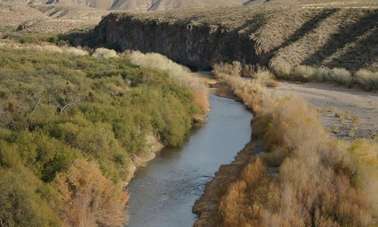Study finds varied fish response to unexpected droughts

When faced with sudden environmental change, some species fare more favorably than others.
Albert Ruhí, a post-doctoral researcher in ASU's Julie Ann Wrigley Global Institute of Sustainability, examines how freshwater biodiversity responds to environmental change, which becomes increasingly erratic as the earth warms.
His latest study, published in the journal Global Change Biology, examines how native and non-native fish respond to significant unexpected variations in water flow, like droughts and floods. The conclusions reached by Ruhí and his team provide insight into the long-term health of each population.
Concentrating their research on Arizona's Upper Verde River, team members – including senior sustainability scientist John Sabo – observed and measured water flow variations. Then, using time-series modeling techniques, they assessed to what extent unexpected droughts and floods affected fish quantities over 15 years.
The results of the study were enlightening. While native fish quantities decreased during droughts, and increased during floods – demonstrating sensitivity to water flow variation – non-native fish proved largely indifferent.
This was a surprise to the team.
"We anticipated that native fish populations would dwindle during droughts and flourish during floods, while non-native populations would respond oppositely, as previous studies had suggested," says Ruhí. "Instead, non-native fish populations remained largely the same."
Most importantly, the team concluded that non-native fish did not influence the quantities of their native counterparts.
"There is no doubt that non-native, or invasive, fauna is a major component of global change and a prominent threat to native fauna," explains Ruhí. "However, our findings demonstrate that we should not assume a dwindling native population is always the fault of a thriving non-native population. In highly variable ecosystems, like desert rivers, non-native fishes may often be a symptom of the altered hydrology that is decimating native fishes, rather than the cause."
In light of groundwater depletion and ongoing drought, Ruhí and his colleagues anticipate that fish populations native to the American Southwest may see substantial losses in coming years.
More information: Ruhí, A., Holmes, E. E., Rinne, J. N. and Sabo, J. L. (2014), Anomalous droughts, not invasion, decrease persistence of native fishes in a desert river. Global Change Biology. doi: 10.1111/gcb.12780
Journal information: Global Change Biology
Provided by Arizona State University


















